Reds’ rugby’s golden era top 50 players between 1980 and 2000. Today, numbers 11-20
Queensland rugby golden era of 1980-2000 generated an army of champion players, prompting this series nominating the mighty Reds greatest 50 players from that time. Today, we reveal numbers 11-20.
Local sport
Don't miss out on the headlines from Local sport. Followed categories will be added to My News.
Queensland rugby golden era of 1980-2000 generated an army of champion players, prompting this series nominating the mighty Reds greatest 50 players from that time.
In that period Queensland started by beating the All Blacks in 1980, thrashed NSW in the 1982 Centenary clash, and went on to win three Super Rugby titles in the 1990s.
Today, we reveal numbers 11-20 in a top 50 players from that time.
QUEENSLAND RUGBY’S GOLDEN ERA: No. 41-50
QUEENSLAND RUGBY GOLDEN ERA: No. 31-40
QUEENSLAND RUGBY’S GOLDEN ERA: No. 21-30
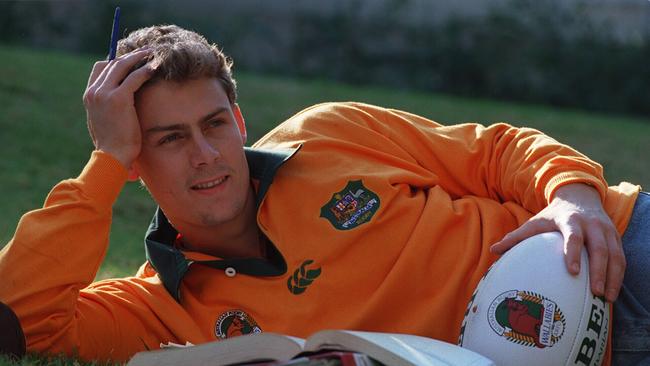
No. 11
JASON LITTLE
Has there been a more athletic specimen to grace top flight rugby union in Queensland than Jason Little? An outside centre, Little was a beautifully balanced player with vision and a lovely passing game. So balanced was he, you get the impression if a tightrope was every strung across Ballymore from one side to the other, he’d walk across it with grace whereas others would stagger. The Toowoomba Grammar School old boy formed one half of the most decorated centre pairing in Wallaby history alongside another Darling Downs product, Tim Horan. Coming to Ballymore to watch Little combine with Horan was worth the admission fee alone when they were in full flight prior to Horan’s unfortunate knee injury in 1994. Those who followed the career of the 75-Test veteran were indeed blessed.
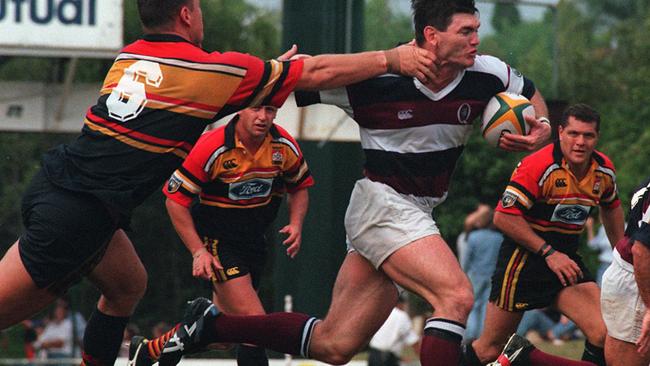
No. 12
DANIEL HERBERT
The greatest complement you can give this Marist College Ashgrove old boy was that it was he who broke up the coveted Little-Horan centre pairing at the start of 1998 on the strength a form surge that simply could not be ignored. Herbert made his Test debut as early as 1994 as an inside centre and, much to the joy of his working class parents Gerry and Margaret, he latched onto a pass 25m out and scored with his first touch in Test football. But it was not until Reds coach John Connolly moved Herbert to wing for a brief stint that Herbert broke the shackles and transformed into a world class player to be reckoned with. A premiership winner with GPS in 1996, Herbert’s form absolutely demanded he be the first choice No. 13, ultimately forcing Little into a move to Sydney in 1999. Herbert was also a wonderful all-round athlete, an outstanding junior tennis player and powerful sprinter. The veteran of 67 Tests was really the perfect outside centre – capable of being a brut in contact while also having the athleticism and pace to penetrate on the outside or send his winger away.
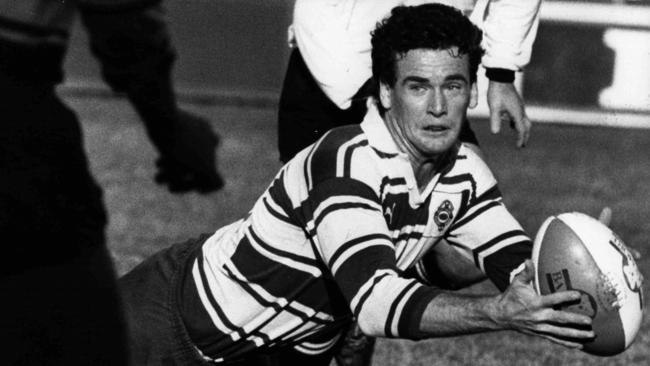
No. 13
BRENDAN MOON
There was Jason Little in the 1990s as the king of smooth moving and before him there was Brendan Moon. The Brothers wing great from the Marist College Ashgrove stable was a superstar. To watch Moon run was like watching poetry in motion. What a joy it must have been for his huffing and puffing forwards to see the bottom of Moon’s boots as he glided his way upfield, further and further into the distance. It is no coincidence Queensland’s resurgence coincided with the emergence of a string of stars, and Moon was at the top of the honours list.
A wonderful footballer.
No. 14
DUNCAN HALL
They say never give a sucker an even break, and so it was the case when David Hillhouse went into an early, albeit temporary retirement, in 1978. With second row vacant, the son of rugby league legend Duncan senior emerged to snare a permanent position with the Maroons. Indeed so impressive was Hall, within 12 months he had won a spot on the reserves bench for Australia. Hillhouse ultimately returned in all his glory, but Queensland immediately benefited from also having a young Hall quickly establishing himself as a rugby great in the making. Indeed in Hillhouse’s last season, it was appropriate that Hall teamed with Hillhouse in a Test against Argentina. Hall was also an excellent No. 8, one of our best.
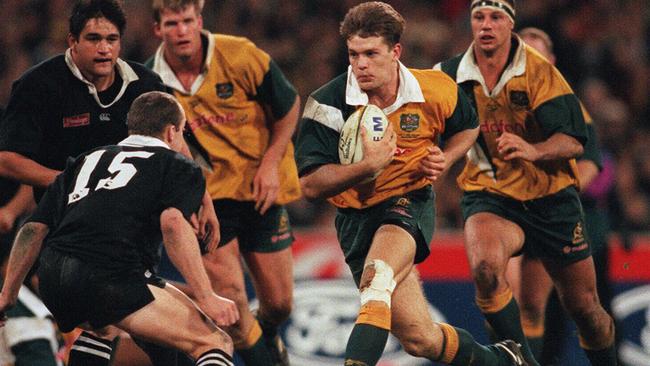
No. 15
BEN TUNE
Brisbane Broncos recruitment ace, the legendary Cyril Connell, was once asked who is the player he most wished he had seen in a Broncos jersey. It was Ben Tune. Tune was a gun and time should never diminish his greatness. A St Paul’s School old boy, he was lured to the GPS club by Tony D’Arcy as a school leaver where he played outside centre and won the esteemed Colt of the Year award. But with Daniel Herbert entrenched at the club as the first grade No. 13, Tune switched to wing where he was to make his mark. Tune was so good that, in his first year as a Wallaby and aged just 19, Wallaby coach Greg Smith switched him from his perferred wing to the other side to confront All Blacks’ legend Jonah Lomu in Wellington in 1996. Lomu was at the peak of his powers then. He was so big that when you stood next to him, you craned your neck toward the sky as if you were standing on a Manhatten sideway admiring the top of the Empire State Building. Australia lost that Test 43-6, but that had nothing to do with Lomu whom Tune tackled at every opportunity. The best of Ben Tune was actually pre-1998 before a chronic knee ailment started playing up. But Tune was not only a super athlete, he was as tough as a Test tighthead prop and never dropped his standards in a glittering career. The final of his 46 Tests was in 2006.
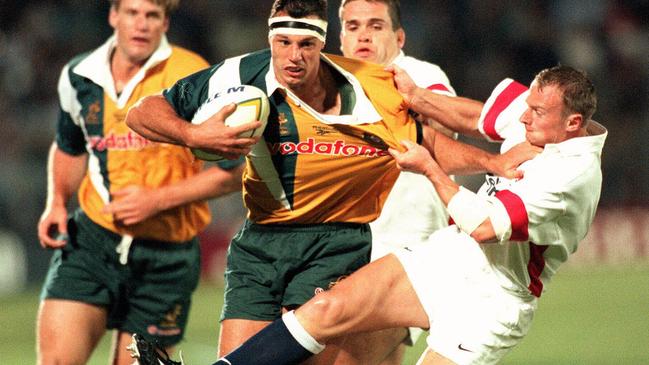
No. 16
MATT COCKBAIN
This is a little like a GPS premiership winning team reunion because Cockbain was a teammate of both Herbert and Tune, both featured above, in the Galloping Greens 1996 grand final winning side. Back then Cockbain was a kid on the rise, a long striding backrower who made the ruck move when he drove into it, and attackers shy away as his shoulder found its target. From Far North Queensland, the keen fisherman adapted well to city lights alongside his brother Brent, and his improving football was a reflection of how content he was. Having come from outside the traditional GPS or AIC pathway, Cockbain was a hard worker who learned his craft at club level. By 1997 he had made his debut for Australia, and in the 1998 season he played all 13 Tests, including helping the Wallabies to a Bledisloe Cup Series win. In one Test in Christchurch, Cockbain found himself on his back on the bottom of the ruck. New Zealand captain Sean Fitzpatrick must have mistaken Cockbain’s chest for the turf, because he used it to gain traction, stepping on Cockbain as he raced off to get to another ruck. It was a harsh welcome to Bledisloe Cup rugby, but an experience this young Aussie backrower lapped up. Cockbain was also a wonderful asset to the Queensland lineout and gained more authority when he carried the ball as the years wore on.
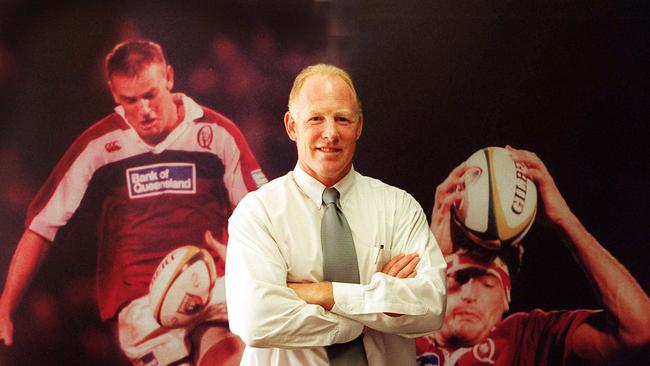
No. 17
JEFF MILLER
Mighty Miller from the University club was indeed a champion, from the top of his ginger hair to the tip of his toe. Queensland would not have swapped this wonderful open side flanker for anyone, in any era. From seaside De La Salle College, Miller was thrown into the wolves when he made his Queensland debut against a World XV aged just 19. When you played backrow in Queensland in that era, believe me, you earnt it, such was the intense competition. Initially beaten into Australian teams by bigger men, Miller maintained his high standards and finally his big break through came on Alan Jones’ Bledisloe Cup winning tour of New Zealand in 1986. Miller went on to play in two World Cups (1987 and 1991).
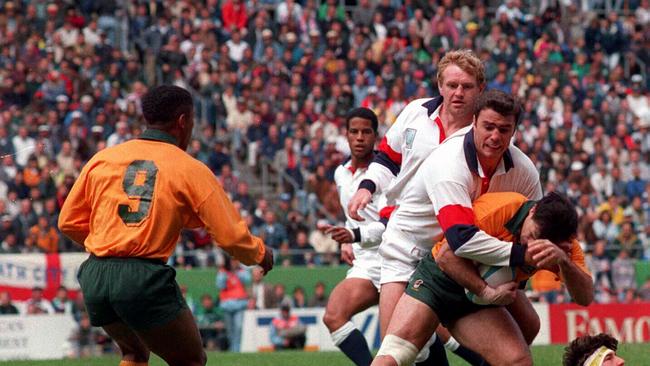
No. 18
DAVID WILSON
Queensland has indeed been blessed over the years when it comes to open side flankers, and Wilson does not lose stride with any of them. A proud Easts Tigers’ man who twice won Rothman’s Medals, Wilson bidded his time behind the great Jeff Miller before being unfurled onto the rugby stage. Quietly spoken, Wilson is the bloke who this author first heard refer to John Eales as “Nobody,’’ – because Nobody is perfect. I tell you whnt, Wilson was also almost perfect at his craft. His bravery knew no bounds as he would either plunge toward a fallen teammate where angels would fear to tread, or stand over his team mate, using his leg and upper body strength. A thorough gentleman and Queensland rugby legend.
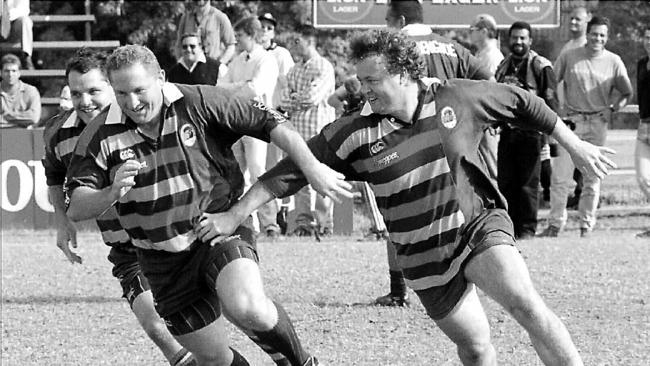
No. 19
DAN CROWLEY
Dan Crowley stood at just 5ft 9 inches, but he was a giant of Queensland rugby. A remarkable survivor at the highest level, the St Laurence’s College old boy ploughed through 124 matches for his beloved Queensland, and 55 Tests between 1989 and 1999. He always gave away weight and size to more grizzly front row opponents, but he had a remarkable technique, toughness and tenacity. For years he was the spiritual leader of the Queensland pack, a thoughtful, well spoken bloke who teammates loved by his side. Crowley was also a marvellous mauler and his mobility was a welcome sight for teammates at the breakdown who were needing reinforcements. The statue of the great John Eales outside the southern entrance to the ground features a figure supporting Eales in a lineout. I would like to think that is Crowley because he certainly deserves such permanent recognition.
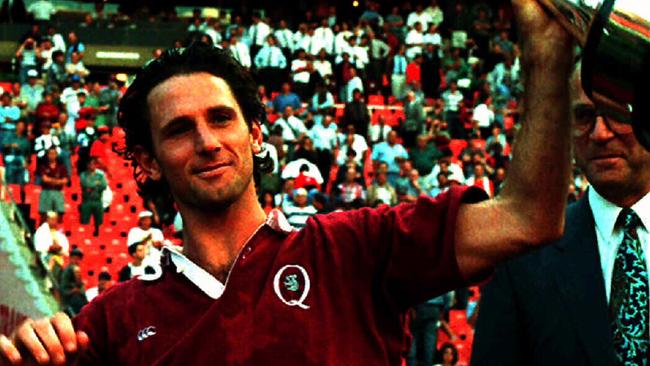
No. 20
PETER SLATTERY
Looking a little like a surfie, Slattery was a popular – and indeed the perfect – choice as Queensland captain in the 1990s. He was a relaxed type, the ideal foil to his intense coach John Connolly and the perfect link between the past and new generation players in the squad. A Brisbane State High School old boy and Wests’ Bulldogs legend, Slattery broke into the state side not long after leaving school. But it was not until 1990 that he enjoyed a moment all who had watched him as a schoolboy knew was coming – his Test debut at Ballymore. He continued to play second fiddle to NSW half Nick-Farr-Jones and then George Gregan, but in between he still managed 17 Test and was a wonderful asset to touring parties. Slattery had a great pass, was a great snipping runner on the blindside, and overall good bloke.
